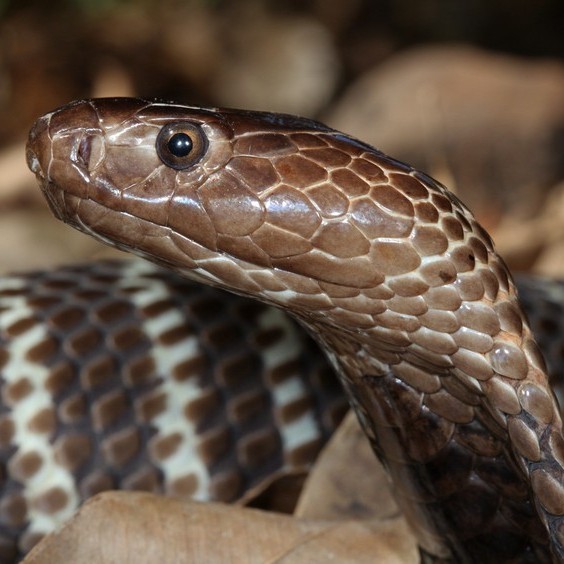

In areas where trees are present they actually seem to be very good climbers and agile snakes. They are predominantly found in dry, arid habitats like Savannas and dry grasslands with lots of sand, rocks and minimal vegetation. woodi can be found a bit more Southern, in Southern Namibia, Southern Botswana and South Africa.

nigricincta can be found in Angola and Central and Northern Namibia, N. Naja ( nigricincta) woodi can be distinguished be the all black uniform body colour, but lack of red colour underneath the black throat, which can be seen with Naja nigricollis. In ‘body shape’ they look similar to Naja nigricollis and Naja mossambica. The head is relatively broad and can clearly be distinguished from the neck. When the Naja nigricincta does not spread its hood this black colouration can be seen on the lower sides of the throat. The throat which they can spread like all cobras is a clear deep black. The head and first part of the neck (where the ‘hood’ spreads) is a uniform brow, grey till deep black colour. Some forms can be more brownish, while others have a very clear dark/light pattern (like a Zebra). The amount of bands and base colour can differ a bit between locals, but in general the bands are a light grey/white and very dark grey till black. These Naja have an obvious banded pattern of dark and light bands across the whole body (also on the belly) until the tip of the tail. The common name does not only tell you that it is a spitting cobra (which we will reflect on later in this article) but also a bit about the appearance. At an age of 3.5 years some can already measure 160cm, baby’s hatch at 30cm-40cm long. But in captivity larger specimens measuring 160-180cm or even longer are not uncommon. General appearance: Let us start with the size of this cobra, in most articles about wild animals the general consent is they are a mid-sized Naja that reaches an average length of 120-140cm, sometimes 150cm. Which obviously can cause much confusion between these three similar species. Then again the Naja ( nigricollis) woodi is often called ‘Black Spitting cobra’. One of the reasons we do not like to use common is the fact that for instance the Naja nigricollis is also called ‘Black Banded Spitting’ cobra. Before Naja nigricincta became a species it was considered a subspecies of the Naja nigricollis (Black Necked Cobra) which get significantly larger, has an all-black colour with a red colour underneath the clear black throat. If this is the case there are two subspecies of the Zebra spitting cobra, the Naja nigricincta nigricincta and N.

There is some debate if the Naja woodi is still considered a subspecies of Naja nigricincta. It is still a cobra, which means a fast moving, highly venomous, food responsive and sometimes nervous potentially deadly snake that can, as the common name implies, spit venom into the eyes of its attacker. But, before we let you get all enthusiastic about this species. They do not get as big as some of the other African species like Naja haje and Naja annulifera and their temperament IN GENERAL is not as bad behaved as some of the Asian species. In captivity they turn out to be one of the most active, least nervous and inquisitive cobras to keep. The Naja nigricincta, also known as the Zebra-Spitting-Cobra or western-Barred-Cobra is an attractive looking ‘mid-sized’ Elapid.


 0 kommentar(er)
0 kommentar(er)
